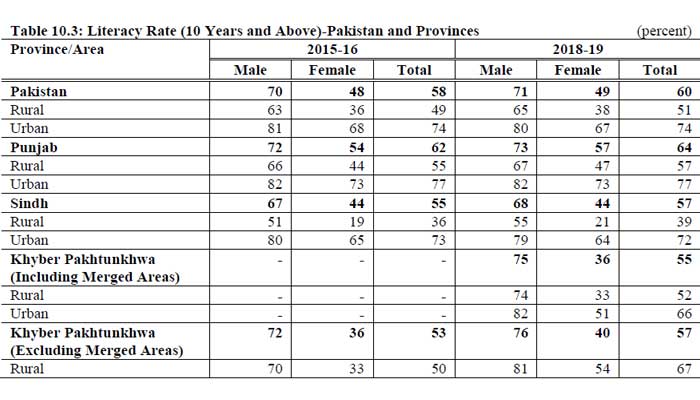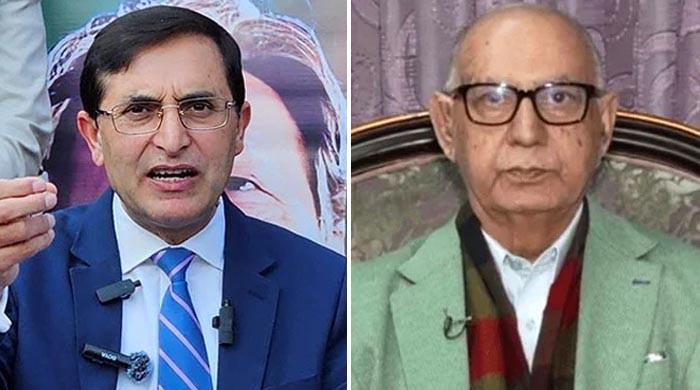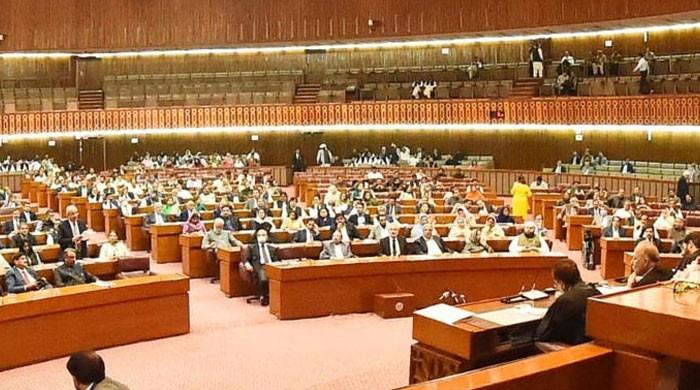Economic Survey: Pakistan's literacy rate increases by 2% to 60%
Mentioning province-wise break-up, the report said that Punjab led all other provinces with a 64% literacy rate
June 11, 2020

ISLAMABAD: Pakistan's literacy rate increased by 2% to 60% in 2018-19 from 58% in 2015-16, according to the Economic Survey issued Thursday.
The bump in the literacy rate was witnessed among the population aged 10 years and above, the survey said, noting that the literacy rate in the urban areas was higher at 74% as compared to the rural areas with a rate of 51%.
Pakistan Social and Living Standards Measurement (PSLM) conducted the survey during the term 2018-19.
Mentioning the province-wise break-up, the report said that Punjab led all the other provinces, with a 64% literacy rate followed by Sindh (excluding merged areas) with 57%, Khyber Pakhtunkhwa (including merged areas) with 55% and Balochistan with 40%.
Gross Enrollment Rates (GER) at the primary level excluding katchi (prep) for the age group 6-10 years at the national level during 2018-19 remained at 87% when compared to 2015-16. Province wise data suggests that Punjab showed improvement from 93% in 2015-16 to 95% in 2018-19, while Sindh remained stable with primary level GER at 78%.

Khyber Pakhtunkhwa (excluding merged areas) improved to 89% in 2018-2019 as compared to 88% in 2015-16, while Balochistan witnessed a decline from 59% in 2015-16 to 57% in 2018-19.
Meanwhile, the Net Enrollment Rates (NER) slightly improved at the national level from 65% in 2015-16 to 66% in 2018-19.
Province wise comparison reveals that Punjab witnessed an improvement in net enrollment, taking it to 73% in 2018-19 as compared to 71% in 2015-16.
Sindh showed an improvement of 58% in 2018-19 as compared to 56% in 2015-16. KP (excluding merged areas) witnessed a decline from 67% in 2015-16 to 66% in 2018-19, while Balochistan remained stable with primary level NER at 40%, the survey added.











